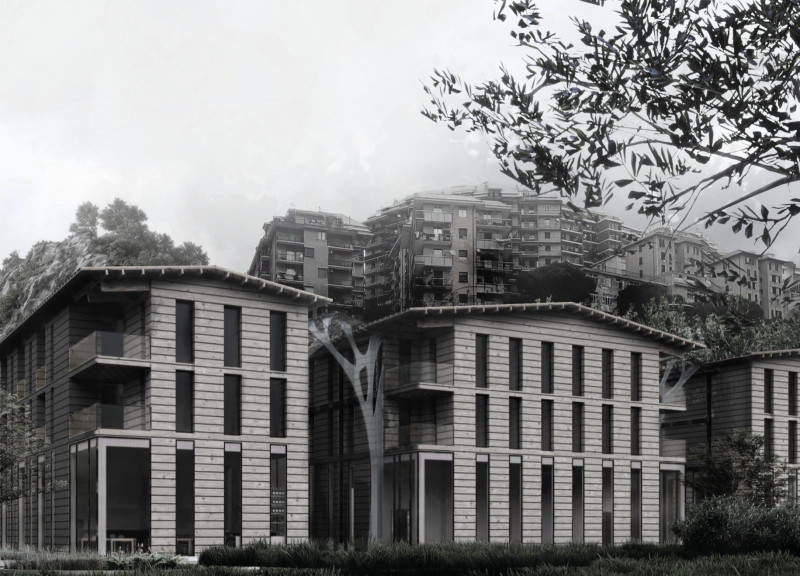5 key facts about this project
At its core, the project is designed to fulfill a clear purpose, whether that be residential, commercial, or community-focused. This functionality is not merely a consideration but the backbone of the design process, influencing every decision—from site selection to material choice. The building's layout is meticulously crafted to promote usage efficiency while fostering a sense of flow among its spaces. This fluidity is achieved through an open plan that invites interaction and engagement, highlighting the human experience as central to architectural design.
The unique aspects of the project arise from its approach to materiality and environmental integration. The architecture employs a range of materials including natural stone, glass, steel, and wood, each chosen for their aesthetic properties and performance characteristics. The use of natural stone provides durability and a tactile quality that connects the structure to its environment. Large expanses of glass create transparency, allowing natural light to flood the interior spaces while offering views of the surrounding landscape, thus blurring the lines between indoor and outdoor environments. In contrast, steel elements contribute to the structural integrity, allowing for expansive spaces that can be customized for varying purposes.
In addition to material selection, the project embraces a sustainable design philosophy. This is evident in features such as energy-efficient systems, rainwater collection, and the incorporation of green spaces, which foster biodiversity. The architectural layout takes advantage of natural ventilation and sunlight, reducing energy consumption and promoting a healthy indoor atmosphere. Such environmental considerations reveal not only a commitment to sustainability but also a deeper understanding of the building's impact on its ecological surroundings.
The design also showcases unique spatial configurations that offer versatile uses. Multi-functional areas encourage adaptability, accommodating diverse needs over time. This foresight embodies a larger trend in architecture—creating spaces that can evolve with their inhabitants rather than remain static. Attention to detail in the design outcomes further enhances the user experience, with carefully considered furnishings and finishes that underscore the overall architectural narrative.
Exploring the consequences of this design approach, it becomes evident that the project represents more than just a structure; it is a reflection of community values and aspirations. The architecture engages with its users and the broader public realm, inviting participation and interaction. Public spaces within the project may serve as gathering points, fostering a sense of community and belonging.
This project stands out through its contextual sensitivity and thoughtful design processes, ensuring that it is not only a shelter but a contributor to the architectural landscape. The relationship between the building and its environment is a noteworthy feature, with attention given to the challenges posed by the local climate and natural topography. Such considerations reflect a comprehensive understanding of site-specific design practices.
For those interested in a deeper understanding of this architectural endeavor, an exploration of the architectural plans, architectural sections, and architectural ideas will provide further insights into the project’s innovative aspects. The intricate balance between aesthetics, functionality, and sustainability in the architecture offers a rich tapestry of design thought worth examining closely. It invites further exploration into how modern architectural design can respond to contemporary needs while remaining rooted in a respect for the environment and community.


























